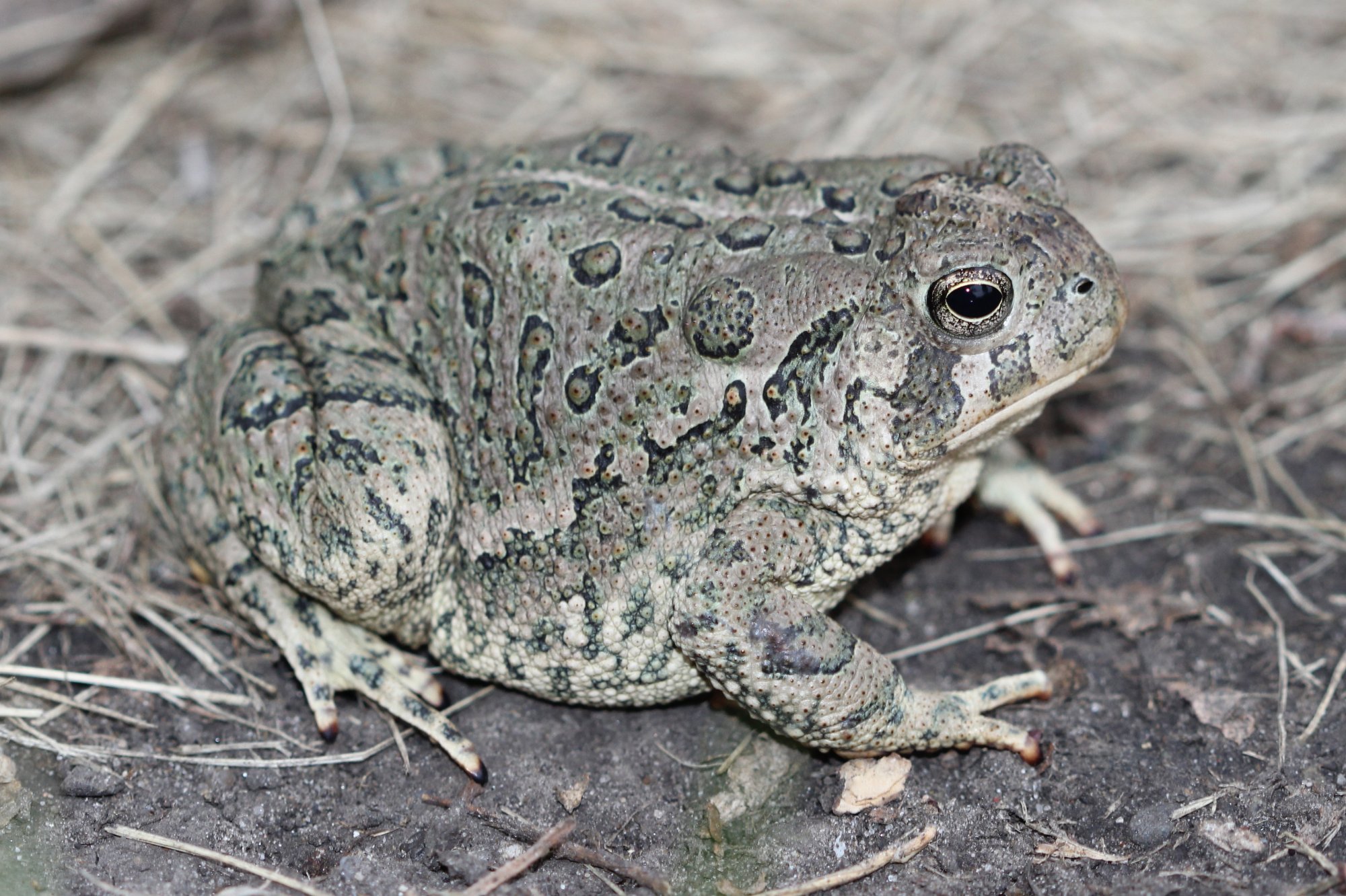Woodhouse’s Toad
They are usually nocturnal but can also be diurnal (active near sunrise and sunset).
They live on land, but return to shallow bodies of water with weak currents for breeding season where they may migrate several hundred meters for breeding. Several dozen adults come together with breeding choruses lasting a few weeks.
Clutches of roughly 25,000 eggs are laid in gelatinous strings in the still-water habitats.
They feed on insects and small invertebrates - you may find them congregated under street lights at night to eat the bugs the light attracts!
The male call sounds similar to that of a sheep and usually lasts 1-3 seconds.

